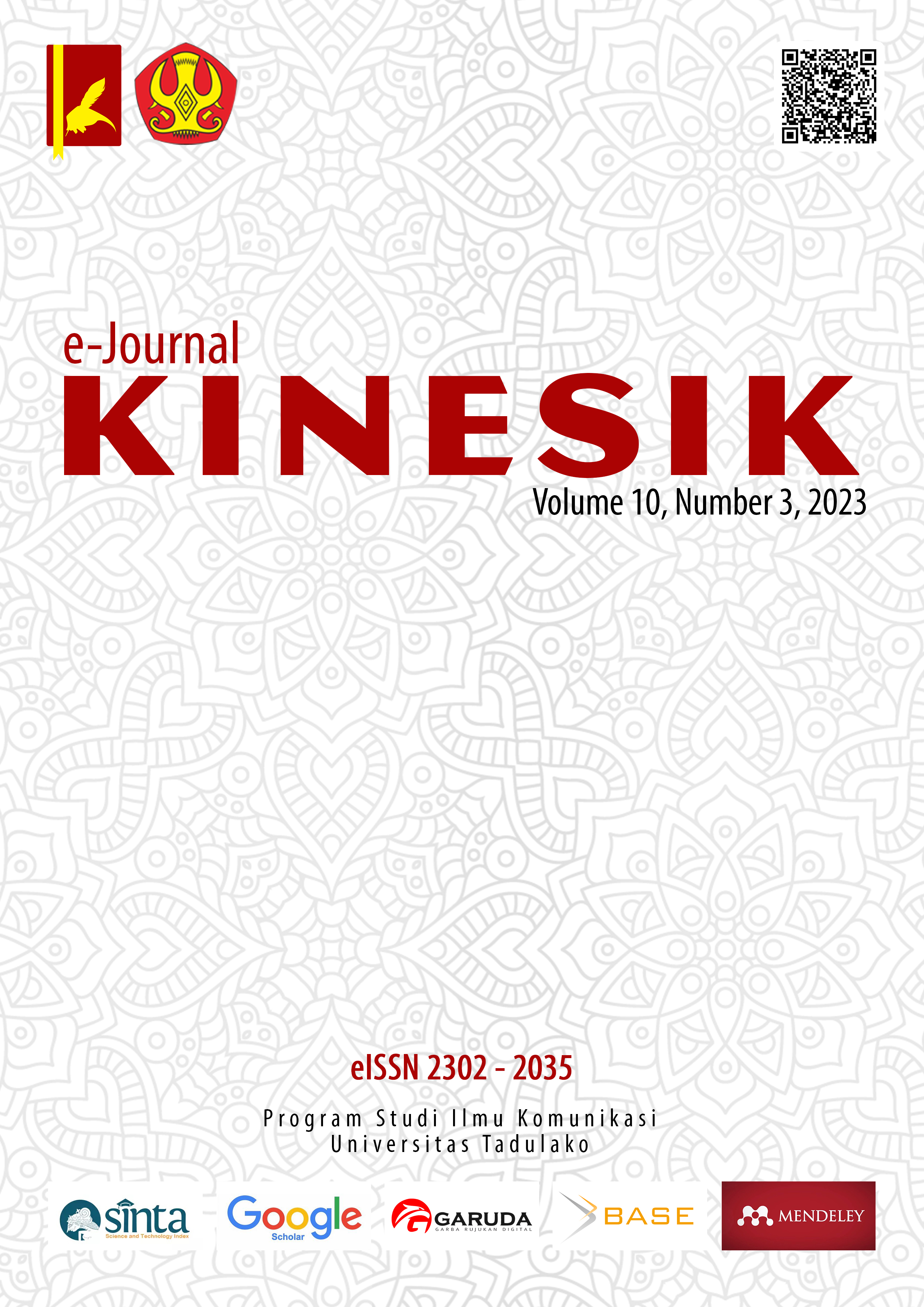MOMASORO TRADITIONAL CEREMONIAL PROCESSION IN THE LAUJE TRIBE: A SEMIOTIC STUDY
DOI:
https://doi.org/10.22487/ejk.v10i3.911Keywords:
Form, Meaning, Function, Momasoro Traditional Ceremony, Lauje TribeAbstract
This research aims to describe: (1) form, (2) meaning, and (3) function contained in the Momasoro traditional ceremonial procession of the Lauje tribe. The method used in this research is descriptive qualitative and uses a semiotic approach. The data sources for this research are the results of interviews, field notes, and documentation in the form of photos or voice recordings. The results of this research show that the form, meaning and function of the Momasoro traditional ceremonial procession in the Lauje tribe have several stages of the ritual process starting from the top of the mountains to the coast, namely starting from the area (1) Bambanu'ayol as the place for the opening of the custom, (2 ) Bambabalal as a meeting place for water, (3) Pogolimpangatang as a large water meeting place, (4) Bambasiang as a place where water spreads, and (5) Bambamate as a traditional closing place. The symbols found in Momasoro traditional ceremonies are grouped into parts (1) Wada' uwompogane; (2) Monyait Salasa'; (3) Molilinsonang; (4) Payangana hinulalanga tolumbenge ma toluweleyo; (5) Inantare'e bamba ma'e nuwogo; and (6) Do’a Salama.







